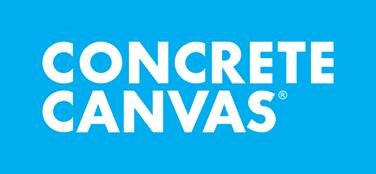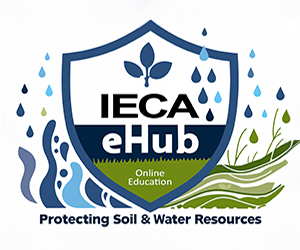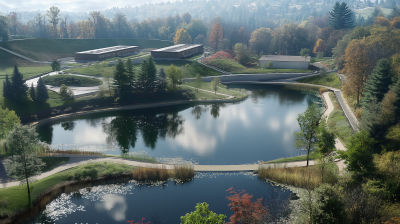
IECA Global Series: Water Management and Soil Protection in Mining
-
Register
- Non member - $40
- Professional member - $15
- Professional Plus member - Free!
- Professional Plus Org member - Free!
- Student member - $15
- Young Professional member - $15
- Emeritus member - $15
- Discounted Professional member - $15
- Australia Member - $15
- Australia Non-Member - $40
- Australasia Professional Plus - Free!
IECA Global Series: Water Management and Soil Protection in Mining

Presented by: Blaine Serrin, Site Environmental Geologist | Stibnite Gold Project, Kyle Fend, Field Operations Manager | Stibnite Gold Project, Sam Fields, Site Supervising Geologist | Stibnite Gold Project, W. Lee Daniels, Professor | Virginia Tech, Michael Frankcombe, Environmental Management Specialist | EMM Consulting and Clayton Colmer, Senior Environmental Engineer | New South Wales' Soil Conservation Service
Level: Intermediate
Duration: 4.5 hours
Type of Course: On-Demand
Join the International Erosion Control Association (IECA) for the Water Management and Soil Protection in Mining where we will explore some of the environmental challenges of mining. This three-part series will examine how we can invest in environmental management in mining. The series will close with a panel discussion between industry leaders. This series will feature three recorded webinars and a recorded panel discussion.
Learn from industry leaders as they tackle mining, while working to provide clean water, healthy soil, and care for the environment. Attendees can expect to learn:
- 1) Different approaches to water management.
- 2) Examples of soil protection.
- 3) How to improve community relationships and investment in the environment during mining activity.
- 4) The concepts behind successful mine reclamation.
Webinar Series Agenda
On-Demand
Leave it Looking Better Than How You Found it!
How Perpetua Resources has conducted a decade of mineral exploration and scientific studies in the most environmentally friendly way possible while navigating an historically-mined site laden with legacy mining issues.
On-Demand
Pre-Mine Analysis and Soil Reconstruction Protocols to Optimize Reclamation Success
Stabilization and revegetation of mining sites is frequently limited by adverse mine soil chemical and physical properties. This seminar will cover essential pre-mining analyses, active mine operating procedures, and soil landform reconstruction protocols that are essential to ensure revegetation success and protect local water quality. Examples will include Appalachian coal mines returned to hayland/pasture and native forests, revegetation of highly acidic coal processing wastes, and return of Coastal Plain mineral sands (Ti and Zr) mines to productive row cropping systems.
On-Demand
Techniques for Interim Stabilization of Mine Spoils until Permanent Revegetation can be Achieved
The design of mining waste landforms rarely considers erosional stability landforms in the interim period landform shaping top soiling and final revegetation. The lack of suitable erosion protection during this time can result in the loss of valuable topsoil, expensive rework and offsite pollution. This presentation discusses a range of temporary and permanent stabilization techniques used in Australia to mitigate this risk.
Wasteland to Wetland: The Urunga Antimony Processing Plant Remediation
In the early 1970’s, a mining company established a processing facility on the foreshore of a freshwater wetland near the coastal village of Urunga, NSW. The facility known and the Antimony Processing Plant, crushed and leached antimony and gold from stibnite ore sourced from Wild Cattle Creek 2 hours truck haul away. The tailings were deposited in the wetland with little scrutiny which was common during this period of mining history. Over the next 40 years, the tailings leached antimony, arsenic, mercury, lead and processing agents like cyanide and cresylic acid into the paperbark forested wetland resulting in a 4 ha impacted area of dead trees and contaminated sediments. Leached contaminants and sediments also made their way through the wetland into the Urunga Lagoon estuary and Kalang River, a popular spot for fishing and swimming for tourists and children. The NSW government eventually applied a remediation order to the site and the $10M clean-up process began in 2015, taking 2 years to complete. The project was highly challenging and extremely constrained environmentally, and hence required much innovation and technology to achieve the successful long term containment of 36,400 tonnes of contaminated material without adverse impact to the environment and the community. The site has been returned to the public as a parkland with an iconic elevated boardwalk spanning the wetland and the reestablishment of several endangered ecological communities. It won the construction industries prestigious ‘Earth Award’ in 2017 at the state level.
A Blueprint of Rehabilitating Success
Rob Loch has been involved in mine rehabilitation assessment and design both across Australia and internationally since the late 1980’s. His presentation will focus on the key principles for design of successful rehabilitation across a wide range of material properties and environments, and will provide several case studies of the successful application of a soundly-based scientific approach to achieve practical and sustainable outcomes. A key message is that even when the same planning process is followed, the designs applied will (and should) vary widely.
On-Demand
Water Management and Soil Protection in Mining - Panel Discussion

Course Last Reviewed: June 2024
Blaine Serrin
Site Environmental Geologist
Stibnite Gold Project | Perpetua Resources
Blaine began working for Perpetua Resources in 2012 soon after getting his Bachelor’s in Geology from Central Washington University. He was a part of the initial field exploration and core logging teams. He has also conducted an auger drilling program of the legacy tailings deposit, been a geotechnical logging geologist on the drill rigs, and is currently the on-site environmental geologist in charge of surface water and groundwater monitoring and sampling.
Kyle Fend
Field Operations Manager
Stibnite Gold Project | Perpetua Resources
Kyle has been in the mining industry for more than 12 years, working in both operations and exploration. His experience includes a range of planning, permitting, environmental compliance, and restoration and closure at various mine sites.
Sam Fields
Site Supervising Geologist
Stibnite Gold Project | Perpetua Resources
Sam Field has been with Perpetua Resources since 2011, where he primarily worked with the exploration team before moving on to be the site environmental geologist through 2017. He is now the site supervising geologist overseeing drilling and environmental operations.

W. Lee Daniels
Thomas B. Hutcheson Jr. Professor of Environmental Soil Science
Virginia Tech
W. Lee Daniels is the Thomas B. Hutcheson Professor of Environmental Soil Science at Virginia Tech in Blacksburg, Virginia. He received his Ph.D. in Soil Science from VPI & SU in 1985. Dr. Daniels areas of specialization include stabilization and restoration of disturbed lands including areas disturbed by mining, road building, waste disposal, urbanization and erosion. Full publications and details available at: https://landrehab.org/.
Michael Frankcombe
Environmental Management Specialist
EMM Consulting
Michael is an environmental management specialist with more 30 years’ practical experience in the civil construction, mining, and pipeline industries. He has been a Director of the Australasian Chapter of IECA for approximately 20 years, was President for 14 years and Technical Vice President of R1 prior to Regionalisation for three years. He is a CPEC (No.1351) and is Co-chair of Technical Committee for Envirocert Int.
Michael specialises in erosion and sediment control, landform design, rehabilitation, revegetation, natural channel design and water treatment. He is recognised nationally and internationally as a soil conservation specialist. He has presented many papers on erosion and sediment control and rehabilitation in Australia, New Zealand, the Philippines and the USA. He has also presented numerous field days on revegetation practices, creek rehabilitation, erosion and sediment control and turbid water treatment.
Michael has also provided erosion and sediment control expert witness services to NSW and Qld Government Agencies, Local Governments, private companies and NGO’s and has a track record of developing practical and workable solutions where others fail using quality science to develop informed solutions.
Clayton Colmer
Senior Environmental Engineer
New South Wales' Soil Conservation Service
Clayton Colmer is a Senior Environmental Engineer with the state of New South Wales' Soil Conservation Service. He heads a team of 6 professional officers who deliver coastal and riverbank protection works, strategic bushfire trail construction, contaminated land management, and mine rehabilitation projects. Prior to his management role, he has worked as an engineer in the private and public sector delivering water and sewerage schemes for Australian rural and aboriginal communities, restoring industrial era canals in northern United Kingdom, and whitewater rafting in the Canadian Rocky's. Clayton has always been passionate about restoring damaged landscapes and understands that the majority of earth is no longer available for protection, leaving restoration as the key to sustainability.
Rob Loch, BAgrSc, BA, PhD, CPSS
Principal Consultant
Landloch Pty Ltd
Rob Loch is one of Australia's most experienced erosion research and management specialists. He has over 45 years’ experience in research and management of soil erosion, soil conservation, and land rehabilitation. His experience encompasses dryland and irrigated agriculture, feedlots, forest management, effluent disposal, urban development, and minesites, with experience in Africa, Asia, and the Pacific, as well as across Australia. He was a member of the Editorial Advisory Committee for the Australian Journal of Soil Research (1996-2001), and a member of the Committee that produced the Leading Practice Handbooks on Mine Rehabilitation for the then Federal Department of Industry, Tourism, and Resources. He has recently been involved in re-drafting the Leading Practice Handbook on Mine Rehabilitation, and in the preparation of the Best Practice document on Progressive Mine Rehabilitation and Closure Planning for Queensland. As a research scientist, he has published 60 articles in peer-reviewed journals, and presented over 100 papers at conferences. As a consultant, he has supervised or carried out studies on soil erosion and its control in the field and laboratory for over 20 years. These studies have included assessments of the effectiveness of a range of hydromulch and soil stabilisation products and their stability to overland flows, polyacrylamide treatment of soil surfaces, effectiveness of a range of flocculants in sediment ponds, vegetation filter strips, and other soil erosion control products.
This series is worth 4.5 Professional Development Hours. You will earn professional development for each presentation you complete.






